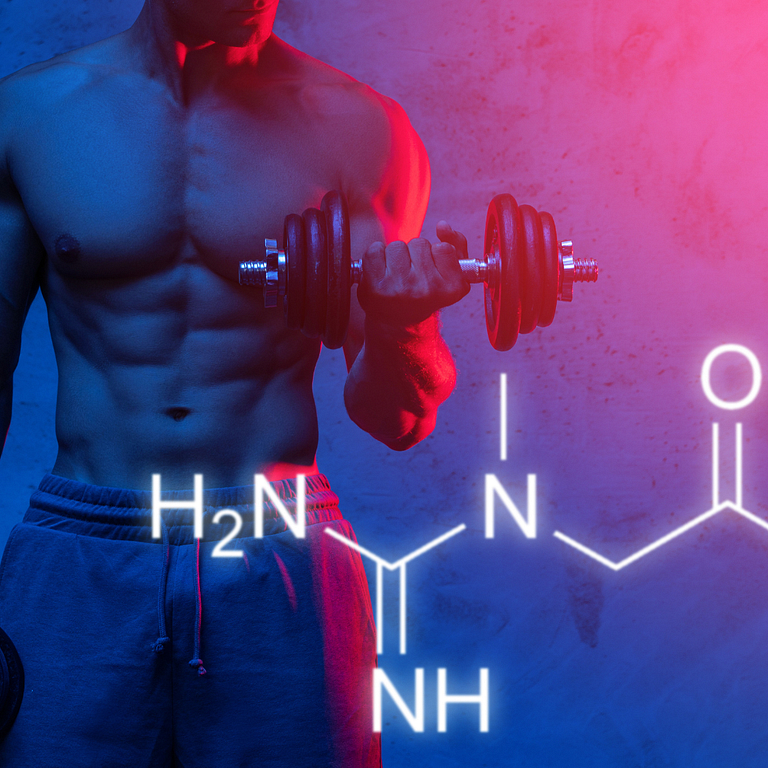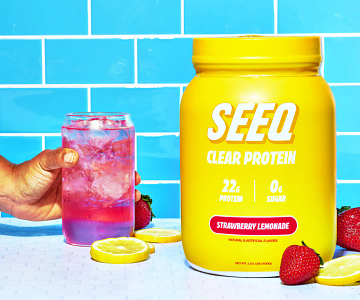- Fact Checked
Last Updated: August 24, 2022
In the world of supplements, peptides appear to be among the most promising for muscle growth. Users report remarkable results following the first few months of taking their treatment. But what exactly is a peptide?
Peptides are mostly commercially-available supplements that help your body build muscles quicker than they naturally would with exercise. They seldom have adverse effects.
So what are the best peptides for growing muscles? Are peptides legal or illegal in sports? Are peptides supplements vegan? Our list of the best peptides for muscle growth will answer all your questions about these neat little hormones.
Peptides certainly help muscles grow. It is a scientific fact that specific peptides can either directly or indirectly promote muscle growth in the body, either by encouraging the release of human growth hormone or some other means.
Most people should expect to notice changes within 3 to 6 months of taking their peptide supplements. Different peptides have different half-lives and methods of action, but most are taken orally in tablet and powder form or intravenously.
Peptides are usually safe with few to no adverse effects. Remember, peptides occur naturally in the body. Your brain has evolved for millions of years to adapt to changes in growth and hormonal output.
In addition to helping muscles grow, peptides have a large array of other benefits:
So how exactly do peptides know how to release growth hormone or which muscles to grow to begin with? The science behind peptides and their use in muscle growth is simpler than you might think.

Peptides are bundles of amino acids identified by their atomic structure and peptide bond. Peptide bonds are covalent bonds between the C1 and N1 atoms of two alpha-amino acids. Depending on the atomic structure of the peptide, it can have numerous effects and properties.
Usually, peptides attach themselves to a neurotransmitter in the brain and stimulate the production of growth hormones. They can do this because of their shape. The production of growth hormone naturally results in the production of other proteins regulating growth, including IGF-1.
GH, also known as the growth hormone, is the primary reason muscles grow as large as they naturally would. Higher amounts of GH in the body obviously lead to more muscle tissue. Growth hormones are ordinarily released following deep sleep, physical activity, and fasting.
There are multiple ways that peptides can increase muscle growth, including:
Which muscle peptides grow depends on the peptide. Specific peptides specifically target skeletal muscles, for example, such as follistatin. Bodybuilders can not go wrong with peptide supplements.
Despite their almost limitless supply of sources, pharmacies rely heavily on non-vegan animal products to make their pills, most notably collagen from pigs and livestock. This shortage is a common problem for vegan bodybuilders hoping to use muscle-growth peptides.
Most commercially available vegan peptide supplements are for purposes other than muscle growth. However, vegan muscle-growth peptide supplements do exist. Vegan Whey and vegan Creatine products help the body pack extra muscle accompanying workouts.
Peptides are naturally occurring. Every human produces them inside of their body. You can also find them in most forms of organic matter. Some of the most common vegan sources for finding peptides include the following:
Many vegan dieting choices allow for additional peptide intake. Soy is highly abundant in peptides. Soy foods are specifically efficient for increasing your levels of IGF-1, which are typically lower in vegans.

There are more peptides than you might expect. Countless analogs, hormones, and supplements exist today for consumers to choose. There are even more places to get them, including plants, fungi, animals, and microorganisms.
A quality peptide should be safe, fast-acting, and have scientific weight backing its efficiency. Here is our list of seven of the best peptides for muscle growth!
Ipamorelin is a peptide that binds to the ghrelin receptors by mimicking the structure of the hormone ghrelin. This bind stimulates the pituitary gland in order to create growth hormones.
This drug is one of the safest peptide supplements because it has a neat tendency not to raise cortisol levels. Likewise, there is no increase in hunger among people receiving Ipamorelin injections.
People who use Ipamorelin will often use it with CJC-1295. This combination is popular because the two drugs act on separate classifications of neuroreceptors in the brain. By stimulating more neuro-receptors, consumers report extra muscle gain.
This peptide also functions as a weight-management and anti-aging supplement. The most common mode of administration for the substance is intravenous injection. The WADA prohibits the use of Ipamorelin and considers it to be doping.
GHRPs are not a single type of peptide. Instead, they are a family of peptides that bind to the receptors GHS-R1a and CD36. They have unique abilities among peptides outside of just muscle growth as well.
These supplements are all synthetic, meaning they need a human to synthesize them rather than having a body secrete them organically. There are multiple types of growth-hormone-releasing-peptides, including:
One of the ways GHRP protects body mass and muscle growth is by slowing sarcopenia. Sarcopenia is an age-related process in which skeletal mass degrades, causing the body to become gradually weaker. Sarcopenia usually takes place after a person reaches their 40s.
You might think GHRPs are similar to GHRHs, but they are somewhat different. GHRP stands for growth hormone-releasing peptide, while GHRH stands for growth hormone-releasing hormone.
GHRH is a naturally occurring hormone and secretagogue, which is a substance that causes a different substance to secrete into the bloodstream. GHRH secretes from the hypothalamus when the body needs growth hormone.
The two substances also act on different neuroreceptors, and GHRPs have the unique ability to treat cardiac pathologies, such as by preventing cardiac cell demise.
Tesofensine is a triple-reuptake inhibitor that people use to stabilize their appetites. The peptide is a serotonin-noradrenaline-dopamine reuptake inhibitor, meaning it blocks these neurotransmitters from being reabsorbed into the brain.
The brain’s inability to reabsorb these neurotransmitters causes several things to happen, including:
Most importantly, the reuptake inhibitors stop you from building an appetite. Because you have a lower desire to eat, you have lower chances of gaining weight and developing fat. When performed in experiments, Tesofensine yields twice as much weight loss efficacy as dieting and exercise.
Subjects in this study were given 0.25, 0.5, and 1.0 milligrams of Tesofensine. Others were given a placebo. After the experiment reached its conclusion, Tesofensine yielded a 4.5%, 9.2%, and 10.6% increase in weight loss for each dosage.
This supplement is undeniably one of the best peptides for muscle growth. Follistatin binds to TGF-Beta receptors where it imitates TGF-Beta proteins. It occurs naturally in the body; you can take follistatin in pill tablets.
The supplement acts as an agonist to myostatin. Myostatin is a protein that limits muscle growth in humans. It most often occurs in skeletal muscles and ensures muscles do not grow too much. An increase in follistatin means stronger and better-developed skeletal muscles.
Follistatin works effectively even in bodies with low IGF production. It is one of the more obscure facts about the peptide. The protein is extremely useful in humans and contributes to a person’s weight and muscular composition at birth.
On top of being a myostatin agonist, there is evidence that follistatin regulates muscle growth in other ways. One of these ways includes targeting the mTOR receptor that naturally binds with rapamycin. Rapamycin otherwise negatively impacts muscle growth in limited circumstances.
IGF-1 is a very potent peptide that encourages muscle growth. The name IGF-1 is an acronym meaning Insulin-like growth factor 1. The substance gets this name from its similarity to the structure of insulin and its ability to bind to the insulin receptor.
The hormone works in synchronicity with the human growth hormone to regulate muscle development. An increased presence of IGF-1 causes hypertrophy and hyperplasia, meaning the hormone increases the size of cells and their amount in the body.
Shortages of IGF-1 are generally harmful to the body and can result in the following negative symptoms:
IGF-1 is natural, safe, and has demonstrated impressive results in building muscle mass. It also has anabolic effects on adults. IGF-1 improves bone cell survival and the overall strength of bone cells.
CJC-1295 is a synthetic variant of somatocrinin. Somatocrinin is also known as GHRH or the growth hormone-releasing hormone. GHRH is the neuropeptide that tells the pituitary gland to release GH, the neurotransmitter that incurs muscle growth.
Of the muscle growth peptides, CJC-1295 is one of the more reliable. Studies have shown impressive results in patients receiving doses of the peptide. Following injections, the amount of GH concentrated in patients’ plasma reached up to ten times what it previously was.
Users commonly take this supplement with Ipamorelin because it yields better results. Using both supplements together increases the blood level of muscle-growth peptides and floods the body with excess growth hormone.
CJC-1295 has another significant function as well. It raises the presence of IGF-1 in the body by up to three times the ordinary level. This elevation in IGF-1 can remain in the human body for more than 28 days if patients receive repeated injections.
Tesamorelin is a synthetic variant of somatocrinin. Somatocrinin is also known as GHRH or the growth hormone-releasing hormone. Medical professionals typically deliver Tesamorelin to patients with HIV to build their fat tissue.
This peptide functions the same way GHRH does because it is a man-made analog of GHRH. The hormone triggers the release of GH in the brain, which causes an increase in muscle development. Tesamorelin is actually more potent than natural GHRH.
In addition to releasing GH, the supplement increases IGF-1 levels in both genders. IGF-1 levels among patients in this trial peaked along the 13th week.
Tesamorelin has a significant ability to grow fat alongside muscle. It is currently in clinical trials for potential as an anti-obesity supplement. It is currently FDA-approved as a treatment for lipodystrophy, but it is not available to consumers without a doctor’s prescription.

The use of growth-stimulating peptides in sports is not permissible, as determined by the World Anti-Doping Agency. The agency forbids the use of peptides both in and outside of competitions. The organization presides over the Olympics and has the power to remove athletes.
It is common knowledge that peptides have a huge potential to help athletes get an unnatural lead over their competitors. On top of all the other health benefits, growth-stimulating peptides enlarge the muscle groups engaging in sport and keep them growing for some time after.
There is a social stigma around peptides similar to that of anabolic steroids. Some see the use of peptides as cheating, because of the rapid and impressive muscle gain users report. Others see it as a fair way to assist their workout gains, like any other vitamin, food, or supplement.
Despite this ban, many athletes choose to use peptides. This is certainly cheating, considering just how much of a disadvantage they are putting their opponents in. Two-thirds of all instances of doping are a result of growth-inducing hormones.
Despite the similarities, there are numerous differences between anabolic steroids and peptides outside of just molecular and atomic differences. Although many people consider both peptides and steroids to be doping, the two classes of drugs have different short and long-term effects.
Peptides are very different from anabolic steroids. Peptides are coded signals telling the brain to produce more growth hormones and can occur naturally. Anabolic steroids are synthetic testosterone analogs that raise a human’s hormonal level beyond what is extant in nature.
The main difference is that anabolic steroids are edited versions of existing substances, while growth-stimulating peptides are simply an assortment of amino acids that induce muscle growth. They also bind to different receptors in the cell.
Another significant difference lies in how long the body retains muscle growth with each supplement. Anabolic steroids are notorious because they reintroduce a lot of the overproduced testosterone as estrogen back into the body. This reaction is the body’s attempt to control the excess testosterone.

Peptides are nothing to look past. They are some of the most beneficial supplements a bodybuilder, weight watcher, or health nut could buy. Their ability to release GH gives them enormous potential as muscle-building supplements.
In addition to their use for muscle growth, peptides have other uses and benefits, including emotional stability, weight control, and other mental and physical effects. Peptides are safe and plentiful. You have many options to choose from depending on your image goals.
Of the many options you have, your safest options will be Ipamorelin and CJC-1295. If you still want better results, Tesofensine and Tesamorelin are likely the most effective options.
List of resources used:


Address: 1300 Avenida Vista Hermosa, San Clemente, CA 92673, United States | Phone Number: +1 (949) 248-0131 | Email: contact@veganliftz.com